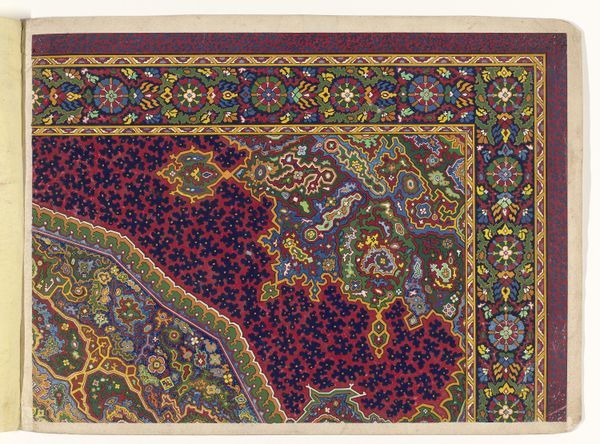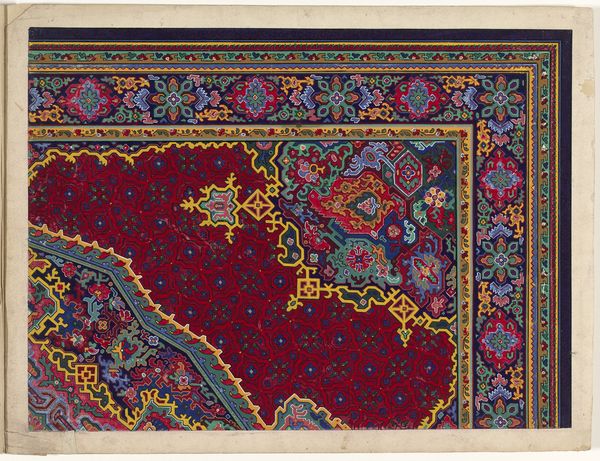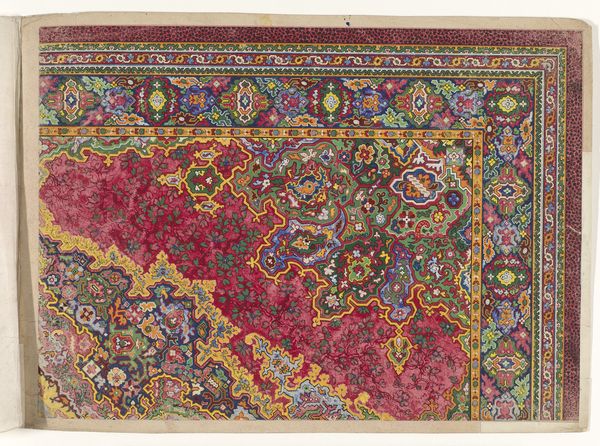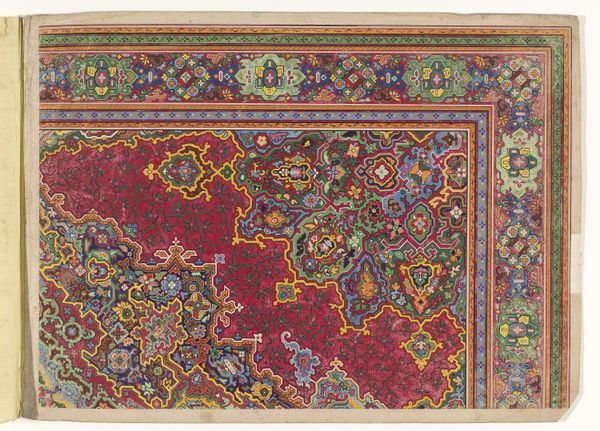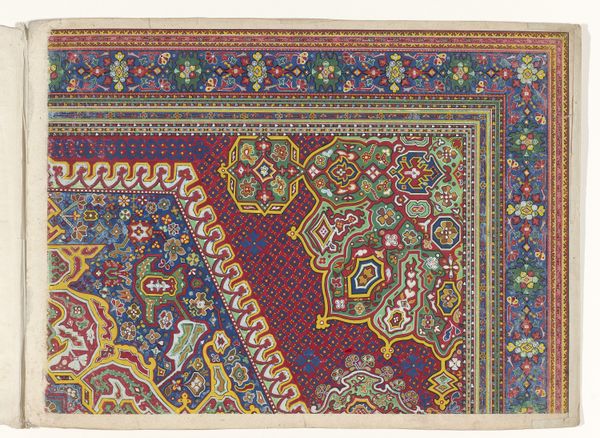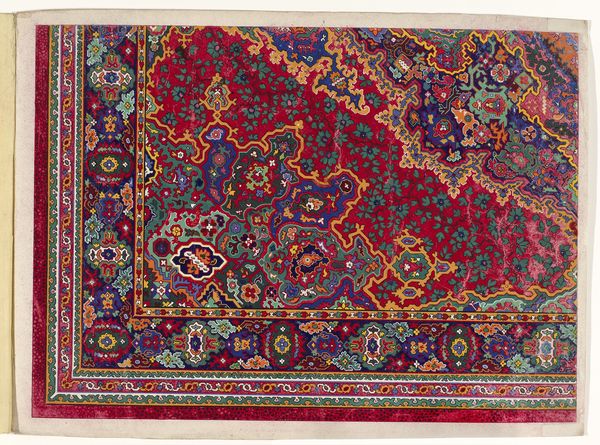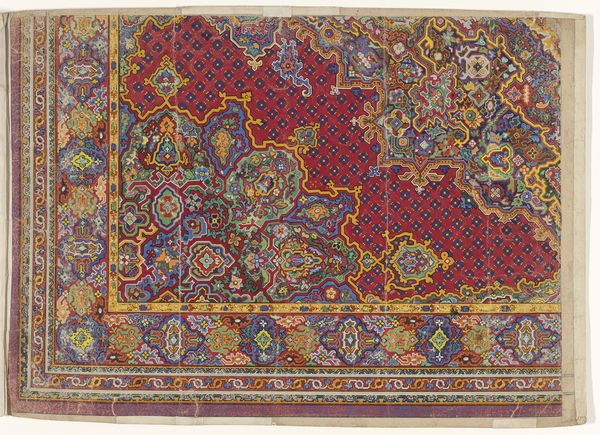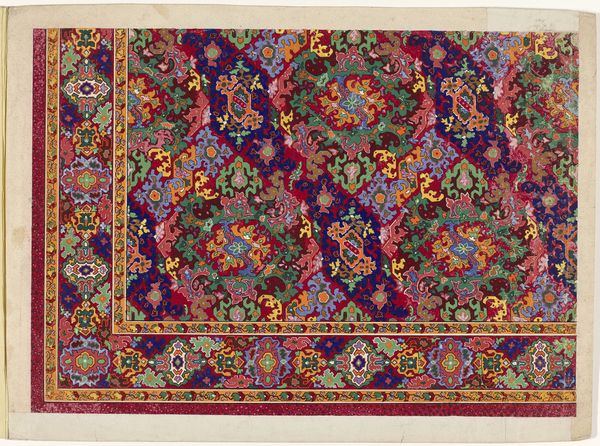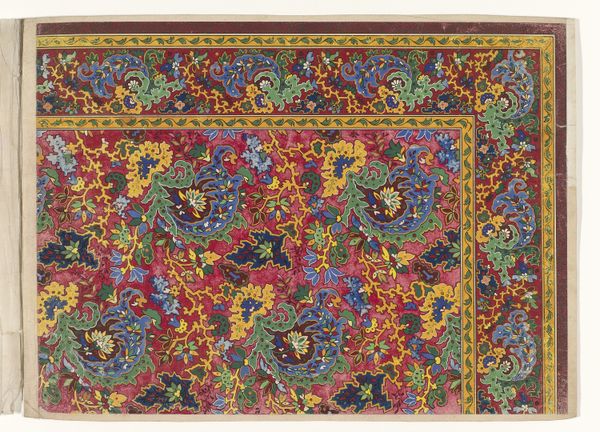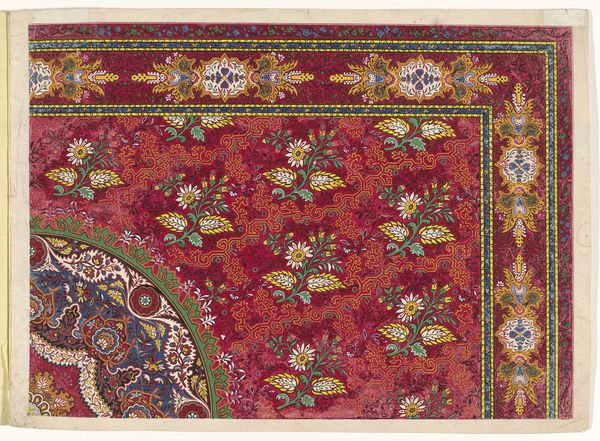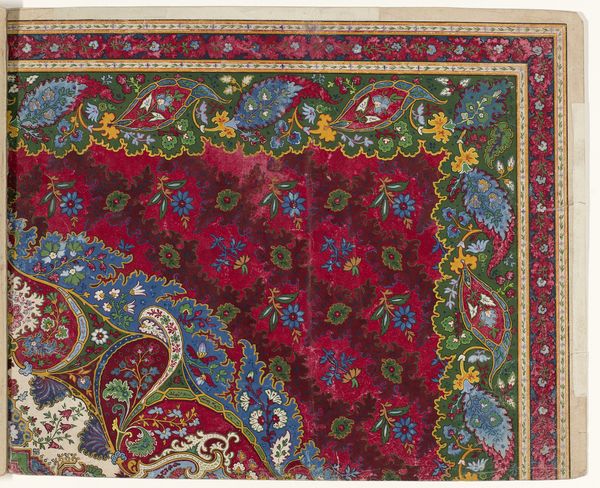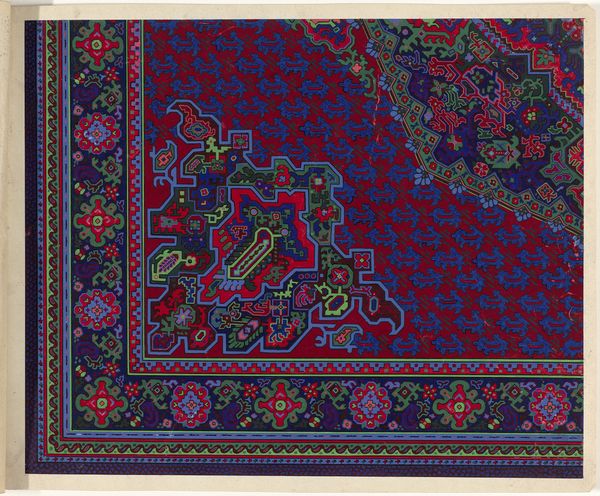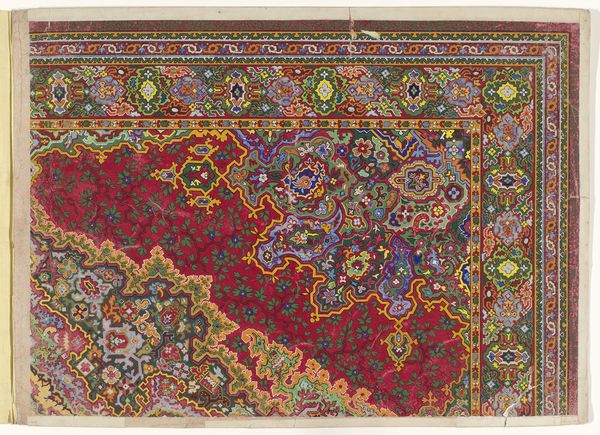
drawing, textile, paper
#
drawing
#
natural stone pattern
#
naturalistic pattern
#
organic
#
textile
#
paper
#
geometric pattern
#
pattern background
#
ethnic pattern
#
organic pattern
#
geometric
#
repetition of pattern
#
vertical pattern
#
pattern repetition
#
decorative-art
#
layered pattern
Dimensions: height 394 mm, width 295 mm
Copyright: Rijks Museum: Open Domain
Editor: This is "Ontwerp voor een tapijt", a carpet design, made sometime between 1854 and 1864 by an anonymous artist, employing mixed media. The patterns feel dense, almost overwhelming, but intricate and beautiful nonetheless. What catches your eye about this work? Curator: The density you observe is key. Think of the mid-19th century, a period of increasing industrialization. Works like this drawing responded by embracing handcraft and intricate detail, aligning with the Arts and Crafts movement. How might this design have functioned within the socio-political landscape of its time? Editor: I guess it would act as a symbol for the value of hand-made items, when machine production was becoming the norm? Curator: Precisely. These designs, even if never realized as physical carpets, served as powerful statements. They asserted the importance of artistry, tradition, and the individual maker against the backdrop of mass production and often dehumanizing factory work. The anonymity of the artist is also worth noting. Editor: Why? Does that mean something about the piece? Curator: It perhaps suggests a focus on the design and the principles of craftsmanship rather than individual artistic fame. These patterns often drew inspiration from global sources, reflecting the expanding trade networks, though that brings up questions about appropriation, doesn’t it? Considering its place in decorative art, what political statements could it make if it's hung in an exhibition? Editor: It feels so different thinking about this design as making an argument about labor practices. It shifts my view entirely. Curator: Exactly. These works are rarely ‘just’ decorative. By considering their historical context, the motivations behind them, we uncover deeper meanings and relevance.
Comments
No comments
Be the first to comment and join the conversation on the ultimate creative platform.
